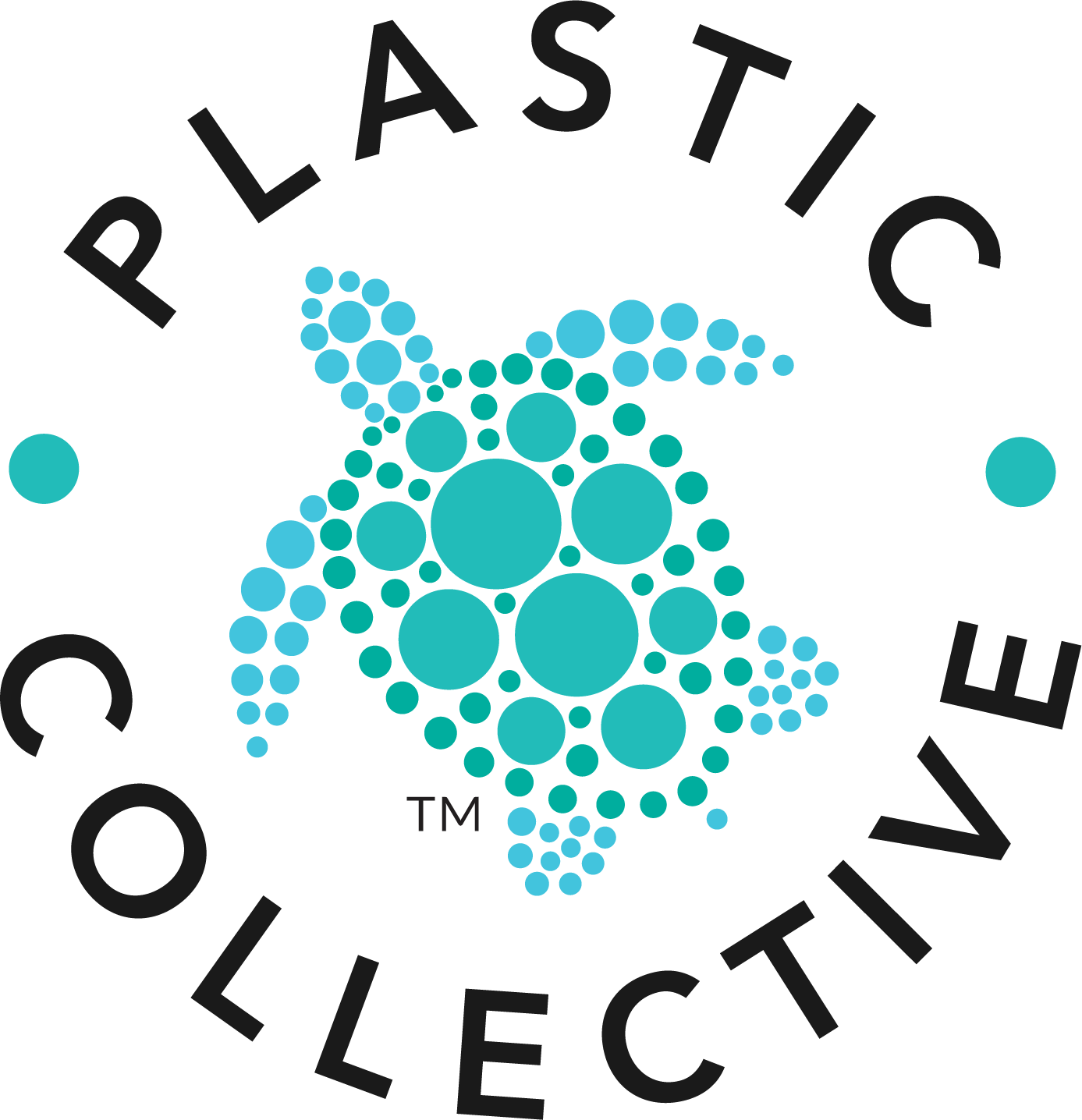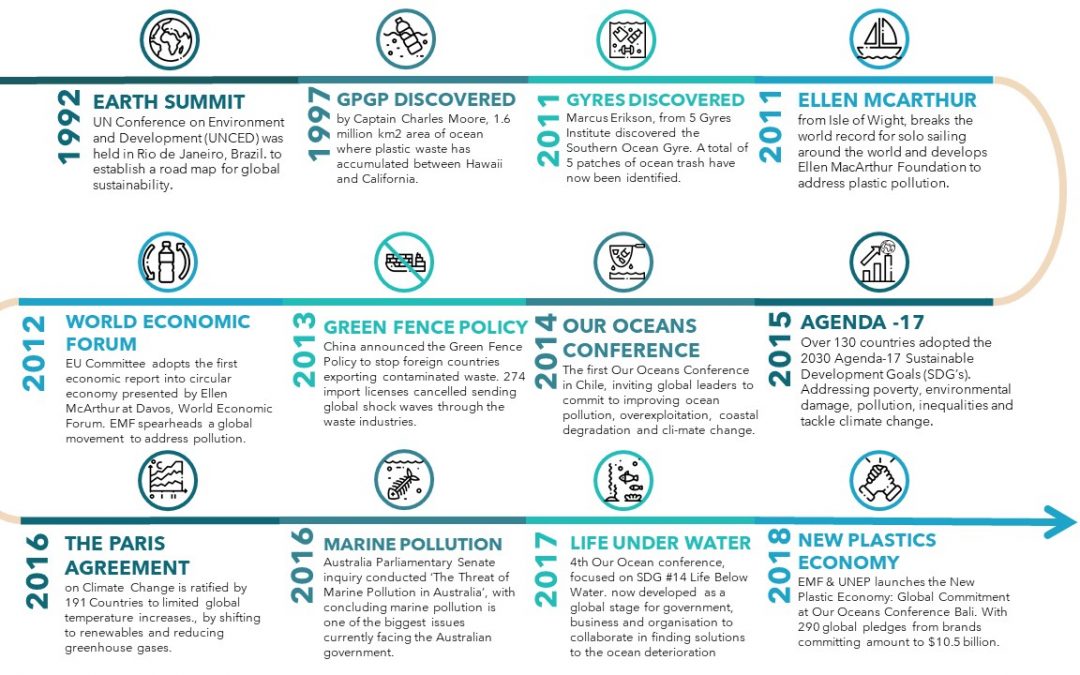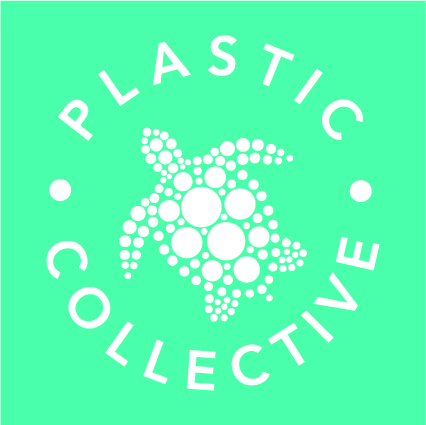History of Plastic Pollution
How we’re Solving the Problem
Humans have been polluting our earth since the beginning of the 19th century, however, it wasn’t until the late 1960’s when we released we actually had a problem. Plastic Collective and other world non government operations, global leaders and companies banded together to put an end to global plastic pollution. Developing initiates and standards, to remove unnecessary plastic in production, mitigate plastic leakage and recover discarded plastics. This is the history of plastic pollution and how were solving the problem:
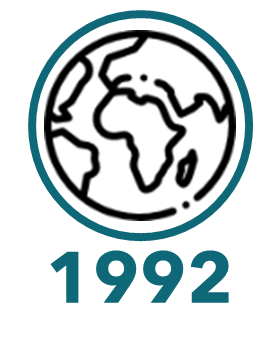
Earth Summit
Sustainable Development Goals
In 1992, the United Nations held an important and groundbreaking conference in Rio de Janeiro, Brazil, called the Earth Summit. This was a UN Conference on Environment and Development (UNCED) established to provide comprehensive non-binding action plans for 178 governments and organisations to achieve global sustainable development by 2000 (21st century).
This was called Agenda 21, where the: ‘Integration of environment and development concerns and greater attention to them will lead to the fulfilment of basic needs, improved living standards for all, better protected and managed ecosystems and a safer, more pros-perous future’.
Following the Earth Summit, another global summit in 2000, world leaders came together in New York to set out 8 targets to reduce extreme poverty and improve living conditions and opportunities for millions of people by 2015, these were called the Millennium Development Goals (MDGs). The MDGs provided a blueprint for governments and organisations to reduce extreme poverty. One of the key achievements from 1990’s was lifting 1 billion people out of poverty, reducing child mortality by more than half, and doubling the number of children getting an education. The MDGs represented a great shift in ending hunger, equality, health and education, however much more effort was required, particularly in protecting environments, addressing climate change and other global sustainable goals.
The Worlds Gyres
The Great Pacific Garbage Patch
In 1997, Captain Charles Moore discovered the Great Pacific Garbage Patch (GPGP); a 1.6 million km2 area of ocean where plastic waste has accumulated between Hawaii and California. This event highlighted how significant the world’s plastic pollution problem was and left everyone wondering “but how did our plastic waste form a floating garbage patch?”

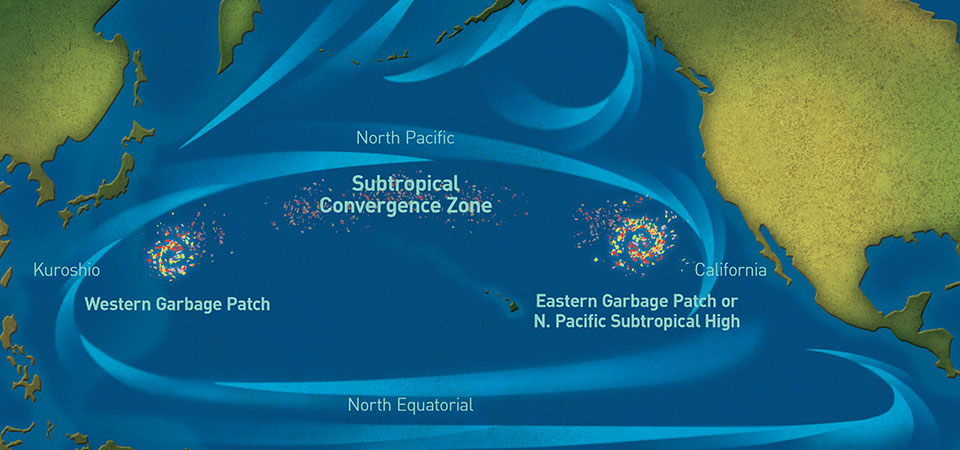
Plastic waste gathers in the world’s oceans through downstream currents from nearly every terrestrial location. Collecting and concentrating in the midst of global ocean currents called gyres; breaking down into small fragments known as micro plastics, being ingested by marine species and sinking into the deep-sea. The great pacific garbage patch is one particular gyre located in the Pacific Ocean between Hawaii and California. The great pacific garbage patch is known for the detrimental impacts of plastics to seabirds nesting on nearby islands and to the surrounding marine animals. In 2011, Marcus Erikson, from 5 Gyres Institute discovered the Southern Ocean Gyre. A total of 5 patches of ocean trash have now been identified.
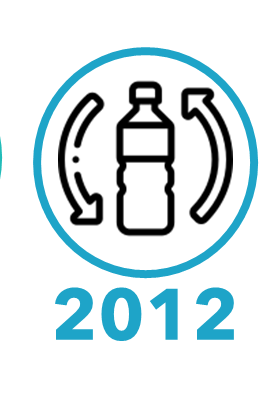
World Economic Forum
Sustainable Development Goals
In 2012 the United Nations held a Sustainable Development conference, again in Rio de Janeiro (20 years since Earth Summit) to address the urgent environmental, political and economic challenges facing the world. The aim was to produce a set of universal goals, called Sustainable Development Goals (SDG’s) to replace the (MDGs). The SDGs called Agenda 2030, had 17 goals, with 169 targets and 231 indicators in 5 key areas – People, Planet, Prosperity, Peace and Partnerships.
Prosperity, Peace and Partnerships.
Globally, all countries have adopted the SDG’s have been integrated into policies throughout government and businesses. Each of the 17 Goals can be tracked for each country through SDG Tracker – Our World in Data
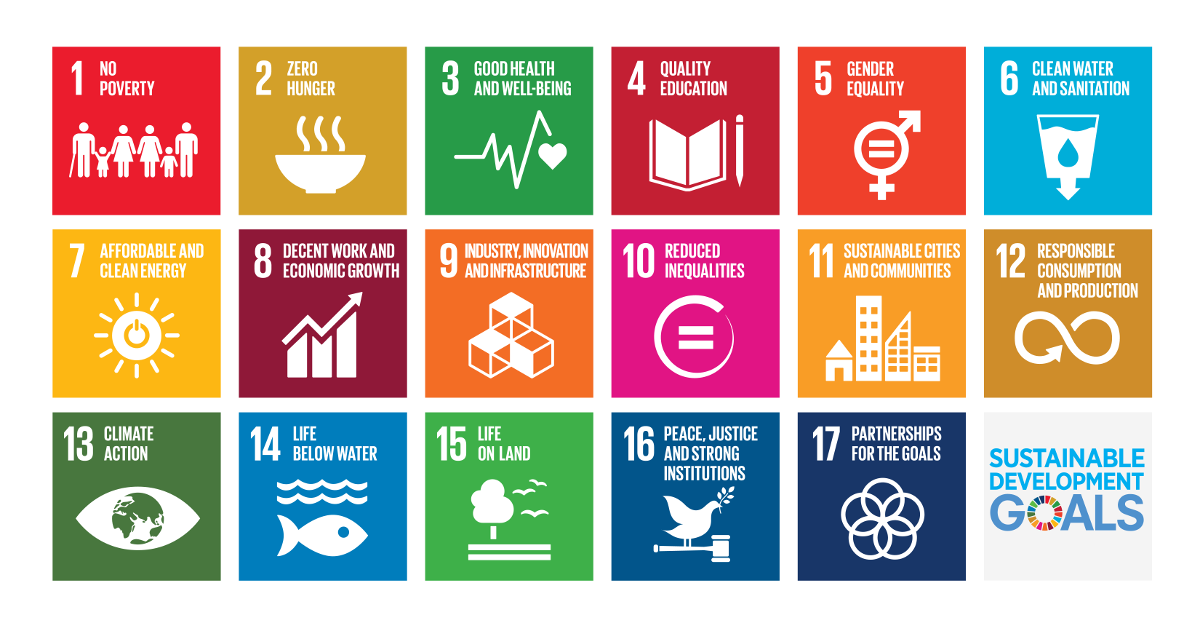
Our Oceans Conference
SDG #14 “Life Under Water”
The first Our Oceans Conference (OOC) in Chile, inviting global leaders to commit to improving ocean pollution, over exploitation, coastal degradation and climate change. Since the first OOC in 2014, the number of OOC Global commitments from Governments, NGO’s commitments with commitments for each ‘area of action’.
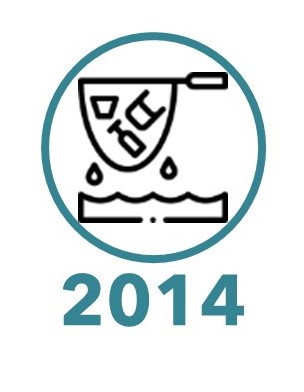
This included Marine Pollution, Marine Protected Areas, Sustainable Fisheries, Maritime Security, Sustainable Blue Economy and Climate Change. These conferences represented a growing global movement at all levels dedicated to making real tangible changes and keeping life below water healthy and thriving. The outcomes from Our Oceans Conference included;
a) 305 tangible and measurable commitments
b) USD 10,7 billion monetary commitments
c) 14 million km2 of Marine Protected Area
Plastic Collective also joined the movement by making a commitment to work in vulnerable areas to create solutions to resource recovery and recycling, which would prevent plastics entering the oceans.
In 2018, the UN Our Oceans Conference was held in Denpasar, Bali, which specifically addressed SDG 14.
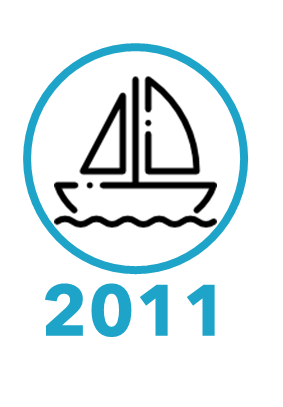
Ellen MacArthur Foundation
Global Commitment
“We must change how we design, use, and reuse plastics. We cannot simply recycle or reduce our way out of the plastic pollution crisis. If we don’t act now, by 2050 there could be more plastic than fish in the oceans”. – EMF. With over 500 global commitments to create a new plastic economy, businesses, governments and organisations pledged to do more, including:
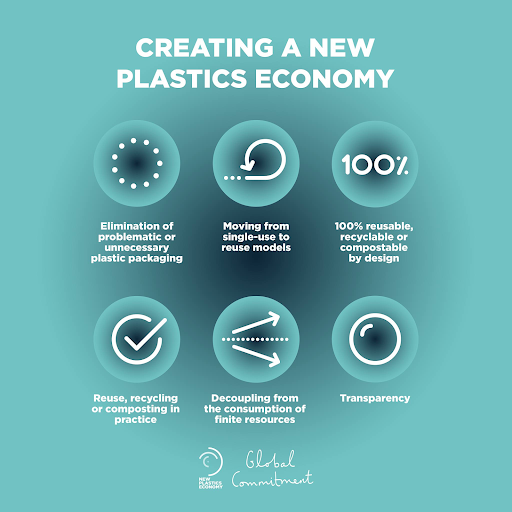
1. Elimination of problematic or unnecessary plastic packaging
2. Moving from single-use to reuse models
3. 100% reusable, recyclable or compostable design
4. Reuse, recycling or composting in practice
5. Decoupling from the consumption of finite resources
6. Transparency
The Global Commitment is led by the Ellen MacArthur Foundation, in collaboration with the UN Environment Programme. Through the Global Commitment, businesses and governments commit to change how we produce, use, and reuse plastic. They will work to eliminate the plastic items we don’t need; innovate so all plastic we do need is designed to be safely reused, recycled, or composted; and circulate everything we use to keep it in the economy and out of the environment.
The Global Commitment has already mobilised over 500 signatories that are determined to start building a circular economy for plastic. These include companies representing 20% of all plastic packaging produced globally, some of which are well-known consumer businesses such as L’Oréal; MARS; Nestlé; PepsiCo; The Coca-Cola Company; and Unilever; the world’s largest retailer – Walmart; major packaging producers such as Amcor and Berry Global; and two of the largest resource management specialists – Veolia and Suez.
3R Initiative and Plastic Standards
Global Commitment
A number of global packaging companies and advisory services came together to form the 3R Initiative (Reduce, Recover & Recycle) steering committee in 2018.
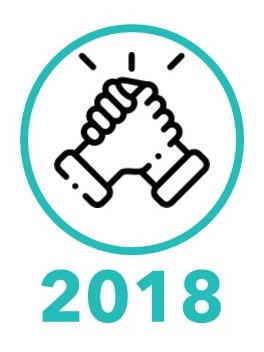
All corporate members of the 3RI’s steering committee have publicly committed, through the New Plastics Economy Global Commitment, to reduce their plastic waste footprints and rethink product design to reduce the amount of plastic needed and ensure that products are as circular as possible. The Guidelines for Corporates set out a vision that corporates will assess their plastic footprint and waste, and identify necessary actions within their value chain.
The Plastic Credits system is a market-based solution which offers an innovative financial instrument that incentivises the collection and recycling of plastic waste (including beverage cartons) in a transparent and socially inclusive way.
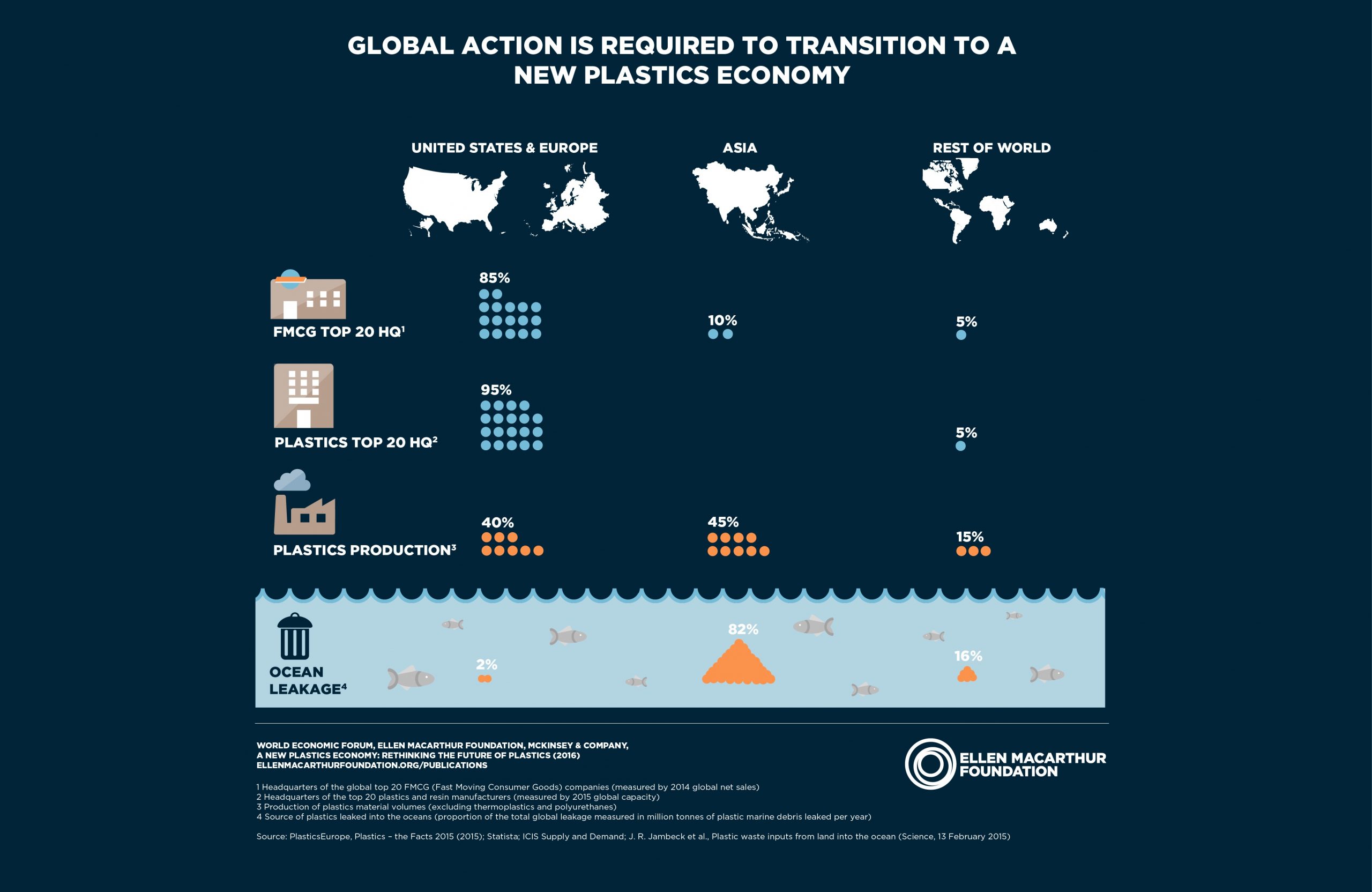
Plastic Collective
Our Story
The idea for an initiative like Plastic Collective was established almost 25 years ago, when a young Louise Hardman (our founder) was volunteering with the Marine Education Society of Australasia on a turtle tagging program.
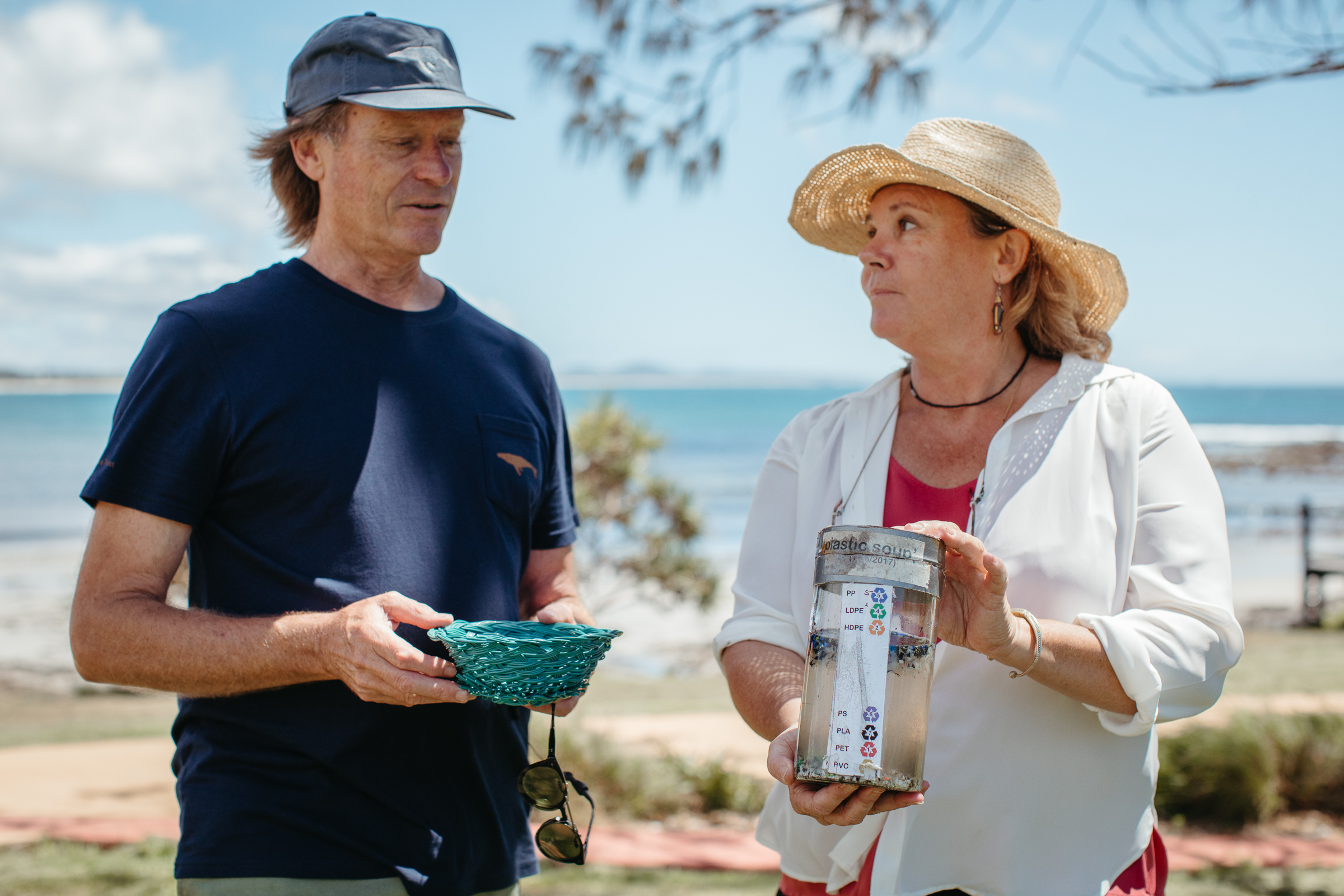
She discovered a small green turtle that was dying a slow painful death from eating plastics hidden in the seagrass. Louise realized there was ‘a gap in the market’; there were few if any projects dedicated to recovering discarded plastic.
Louise, with help from her siblings Steve and Dianne, started Plastic Collective with the aim to empower the world’s most vulnerable communities to address the plastic waste problem. These communities were drowning with the tide of plastic waste, without the infrastructure, education or support needed to address the problem.

Since then, Plastic Collective has developed several community projects, creating micro-enterprise recycling facilities and providing plastic education and training, to transform the lives of these communities. Our Les village, Bali project was even one of the pilot programs for the 3R Initiative.

We are proud to be working with so many different communities and partners who share the same vision – reducing plastic waste and eliminating pollution.
